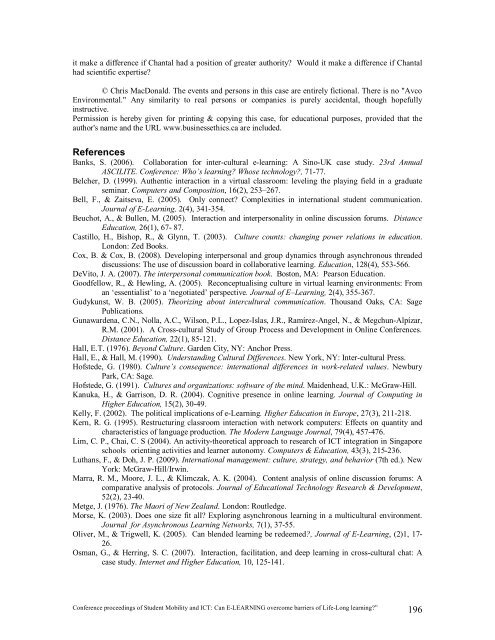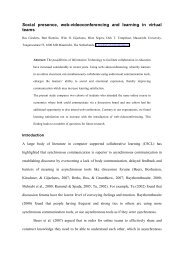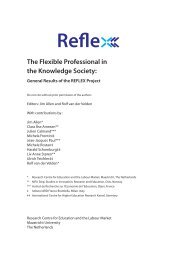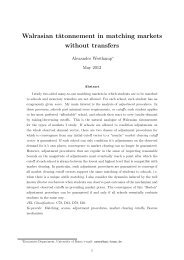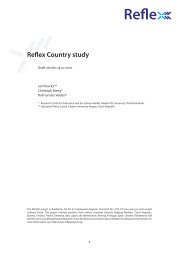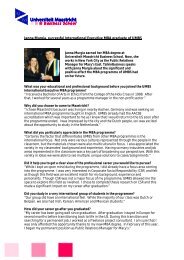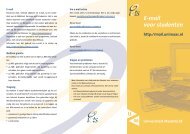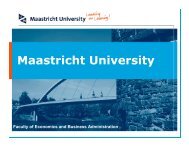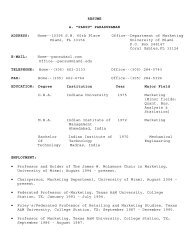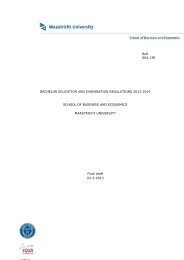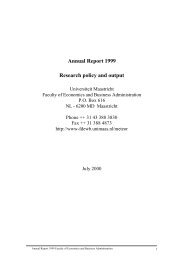proceedings of Student Mobility and ICT: Can E-LEARNING
proceedings of Student Mobility and ICT: Can E-LEARNING
proceedings of Student Mobility and ICT: Can E-LEARNING
Create successful ePaper yourself
Turn your PDF publications into a flip-book with our unique Google optimized e-Paper software.
it make a difference if Chantal had a position <strong>of</strong> greater authority? Would it make a difference if Chantal<br />
had scientific expertise?<br />
© Chris MacDonald. The events <strong>and</strong> persons in this case are entirely fictional. There is no "Avco<br />
Environmental." Any similarity to real persons or companies is purely accidental, though hopefully<br />
instructive.<br />
Permission is hereby given for printing & copying this case, for educational purposes, provided that the<br />
author's name <strong>and</strong> the URL www.businessethics.ca are included.<br />
References<br />
Banks, S. (2006). Collaboration for inter-cultural e-learning: A Sino-UK case study. 23rd Annual<br />
ASCILITE. Conference: Who’s learning? Whose technology?, 71-77.<br />
Belcher, D. (1999). Authentic interaction in a virtual classroom: leveling the playing field in a graduate<br />
seminar. Computers <strong>and</strong> Composition, 16(2), 253–267.<br />
Bell, F., & Zaitseva, E. (2005). Only connect? Complexities in international student communication.<br />
Journal <strong>of</strong> E-Learning, 2(4), 341-354.<br />
Beuchot, A., & Bullen, M. (2005). Interaction <strong>and</strong> interpersonality in online discussion forums. Distance<br />
Education, 26(1), 67- 87.<br />
Castillo, H., Bishop, R., & Glynn, T. (2003). Culture counts: changing power relations in education.<br />
London: Zed Books.<br />
Cox, B. & Cox, B. (2008). Developing interpersonal <strong>and</strong> group dynamics through asynchronous threaded<br />
discussions: The use <strong>of</strong> discussion board in collaborative learning. Education, 128(4), 553-566.<br />
DeVito, J. A. (2007). The interpersonal communication book. Boston, MA: Pearson Education.<br />
Goodfellow, R., & Hewling, A. (2005). Reconceptualising culture in virtual learning environments: From<br />
an ‘essentialist’ to a ‘negotiated’ perspective. Journal <strong>of</strong> E–Learning, 2(4), 355-367.<br />
Gudykunst, W. B. (2005). Theorizing about intercultural communication. Thous<strong>and</strong> Oaks, CA: Sage<br />
Publications.<br />
Gunawardena, C.N., Nolla, A.C., Wilson, P.L., Lopez-Islas, J.R., Ramírez-Angel, N., & Megchun-Alpízar,<br />
R.M. (2001). A Cross-cultural Study <strong>of</strong> Group Process <strong>and</strong> Development in Online Conferences.<br />
Distance Education, 22(1), 85-121.<br />
Hall, E.T. (1976). Beyond Culture. Garden City, NY: Anchor Press.<br />
Hall, E., & Hall, M. (1990). Underst<strong>and</strong>ing Cultural Differences. New York, NY: Inter-cultural Press.<br />
H<strong>of</strong>stede, G. (1980). Culture’s consequence: international differences in work-related values. Newbury<br />
Park, CA: Sage.<br />
H<strong>of</strong>stede, G. (1991). Cultures <strong>and</strong> organizations: s<strong>of</strong>tware <strong>of</strong> the mind. Maidenhead, U.K.: McGraw-Hill.<br />
Kanuka, H., & Garrison, D. R. (2004). Cognitive presence in online learning. Journal <strong>of</strong> Computing in<br />
Higher Education, 15(2), 30-49.<br />
Kelly, F. (2002). The political implications <strong>of</strong> e-Learning. Higher Education in Europe, 27(3), 211-218.<br />
Kern, R. G. (1995). Restructuring classroom interaction with network computers: Effects on quantity <strong>and</strong><br />
characteristics <strong>of</strong> language production. The Modern Language Journal, 79(4), 457-476.<br />
Lim, C. P., Chai, C. S (2004). An activity-theoretical approach to research <strong>of</strong> <strong>ICT</strong> integration in Singapore<br />
schools orienting activities <strong>and</strong> learner autonomy. Computers & Education, 43(3), 215-236.<br />
Luthans, F., & Doh, J. P. (2009). International management: culture, strategy, <strong>and</strong> behavior (7th ed.). New<br />
York: McGraw-Hill/Irwin.<br />
Marra, R. M., Moore, J. L., & Klimczak, A. K. (2004). Content analysis <strong>of</strong> online discussion forums: A<br />
comparative analysis <strong>of</strong> protocols. Journal <strong>of</strong> Educational Technology Research & Development,<br />
52(2), 23-40.<br />
Metge, J. (1976). The Maori <strong>of</strong> New Zeal<strong>and</strong>. London: Routledge.<br />
Morse, K. (2003). Does one size fit all? Exploring asynchronous learning in a multicultural environment.<br />
Journal for Asynchronous Learning Networks, 7(1), 37-55.<br />
Oliver, M., & Trigwell, K. (2005). <strong>Can</strong> blended learning be redeemed?, Journal <strong>of</strong> E-Learning, (2)1, 17-<br />
26.<br />
Osman, G., & Herring, S. C. (2007). Interaction, facilitation, <strong>and</strong> deep learning in cross-cultural chat: A<br />
case study. Internet <strong>and</strong> Higher Education, 10, 125-141.<br />
Conference <strong>proceedings</strong> <strong>of</strong> <strong>Student</strong> <strong>Mobility</strong> <strong>and</strong> <strong>ICT</strong>: <strong>Can</strong> E-<strong>LEARNING</strong> overcome barriers <strong>of</strong> Life-Long learning?” 196


